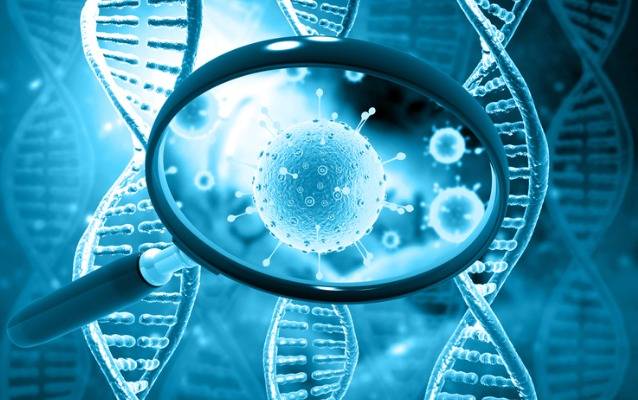Synthesis and Characterization of Iron, Titanium and their Mixture with Benzene-1,3,5-Tricarboxylic Acid Framework
Main Article Content
Abstract
Metal-organic frameworks (MOFs, also known as coordination polymers), are a new class of crystalline porous materials that consist of metal centers and/or metal clusters connected by organic linkers.
This project is concerned with the synthesizing and characterization of mixed-metal metal-organic frameworks (MM-MOFs) of 1,3,5-Tri-Carboxylic Acid Benzene (BTC), M-Fe-BTC, where M = Ti+3, by using the Solvothermal method. The MM-MOFs' powder X-ray diffraction patterns were similar to those of MIL (100). The results of scanning electron microscopy show that most of them are nanomaterials. The six samples had varying amounts of iron and titanium, according to the EDX results. The FT-IR results support the XRD outcomes. Thermal analysis demonstrates multiple stages of decomposition, and the materials show thermal stability up to 450 °C. UV-Vis Diffuse Reflectance confirmed that all samples, with the exception of sample No. 1 (insulator), are semiconductors.
Article Details
References
Anja Cara,b*, Chrtomir Stropnika, Klaus- Viktor Peinemannb, Desalination 200 (2006) 424-426. DOI: https://doi.org/10.1016/j.desal.2006.03.390
Ma, F. J., Liu, S. X., Sun, C. Y., Liang, D. D., Ren, G. J., Wei, F., ... & Su, Z. M. (2011). A sodalite-type porous metal− organic framework with polyoxometalate templates: adsorption and decomposition of dimethyl methyl phosphonate. Journal of the American Chemical Society, 133(12), 4178-4181.
Krungleviciute et al., 2007Ma, F. J., Liu, S. X., Sun, C. Y., Liang, D. D., Ren, G. J., Wei, F., ... & Su, Z. M. (2011). A sodalite-type porous metal− organic framework with polyoxometalate templates: adsorption and decomposition of dimethyl methylphosphonate. Journal of the American Chemical Society,133(12), 4178-4181. DOI: https://doi.org/10.1021/ja109659k
Czaja, A. U., Trukhan, N., & Müller, U. (2009). Industrial applications of metal–organic frameworks. Chemical Society Reviews, 38(5), 1284-1293. DOI: https://doi.org/10.1039/b804680h
Tranchemontagne, D. J., Mendoza-Cortés, J. L., O’keeffe, M., & Yaghi, O. M. (2009). Secondary building units, nets and bonding in the chemistry of metal- organic frameworks. Chemical Society Reviews, 38(5), 1257-1283. DOI: https://doi.org/10.1039/b817735j
Sharmin, E., & Zafar, F. (2016). Introductory chapter: metal organic frameworks (MOFs). In Metal-organic frameworks. Intech Open. DOI: https://doi.org/10.5772/64797
Karmakar, A., & Oliver, C. L. (2013). A two-dimensional metal organic network with 1, 3, 5-benzenetricarboxylate and cobalt (II) ions: synthesis, structure and topology. DOI: https://doi.org/10.1524/zkri.2013.1610
P. Horcajada, et al., "Synthesis and Catalytic properties of MIL-100(Fe), an iron (III) carboxylate with Large Pores", Chem. Commun., 2820-2822 (2007). DOI: https://doi.org/10.1039/B704325B
Castells-Gil, J., Padial, N. M., Almora-Barrios, N., Da Silva, I., Mateo, D., Albero, J., ... & Martí-Gastaldo, C. (2019). De novo synthesis of mesoporous photoactive titanium (iv)–organic frameworks with MIL-100 topology. Chemical Science, 10(15), 4313-4321. DOI: https://doi.org/10.1039/C8SC05218B
Pangkumhang, B. H. U. C. K. C. H. A. N. Y. A., Jutaporn, P. A. N. I. T. A. N., Sorachoti, K., Khamdahsag, P., & Tanboonchuy, V. (2019). Applicability of iron (III) Trimesic (Fe-BTC) to enhance lignin separation from pulp and paper wastewater. Sains Malaysiana,48(1), 199-208 DOI: https://doi.org/10.17576/jsm-2019-4801-23
Jing Shi, Shengtao Hei, Huanhuan Liu, Yanghe Fu, Fumin Zhang, Yijun Zhong, Weidong Zhu 03 October 2013 https://doi.org/10.1155/2013/792827 DOI: https://doi.org/10.1155/2013/792827
Hakim, L., Dirgantara, M., and Nawir, M. (2019). Karakterisasi struktur material pasir bongkahan galian golongan c dengan menggunakan X-Ray Difraction (X-RD) di kota Palangkaraya. Jurnal Jejaring Matematika dan Sains, 1(1), 44-51. DOI: https://doi.org/10.36873/jjms.v1i1.136
Bunaciu, A. A., UdriŞTioiu, E. G., and Aboul-Enein, H. Y. (2015). X-ray diffraction: Instrumentation and applications. Critical Reviews in Analytical Chemistry, 45(4), 289- 299. DOI: https://doi.org/10.1080/10408347.2014.949616
Delgado-Marín, J. J., Narciso, J., & Ramos-Fernández, E. V. (2022). Effect of the Synthesis Conditions of MIL-100(Fe) on Its Catalytic Properties and Stability under Reaction Conditions. Materials (Basel, Switzerland),15(18), 6499. https://doi.org/10.3390/ma15186499 DOI: https://doi.org/10.3390/ma15186499
Lestari, W. W., Hartono, J., Adreane, M., Nugrahaningtyas, K. D., Purnawan, C., & Rahardjo, S. B. (2016). Electro-synthetic optimization of host material based on MIL-100 (Fe).Molekul, 11(1), 61-70. DOI: https://doi.org/10.20884/1.jm.2016.11.1.195
Święch, Dominika & Paluszkiewicz, Czeslawa & Piergies, Natalia & Pięta, Ewa & Lelek-Borkowska, Urszula & Kwiatek, Wojciech. (2018). Identification of Corrosion Products on Fe and Cu Metals using Spectroscopic Methods. Acta Physica Polonica A. 133. 286-288. 10.12693/APhysPolA.133.286 17. Al-Amin, Mohammad & Dey, Shaikat & Rashid, Taslim & Ashaduzzaman, Md & Shamsuddin, Sayed. (2016). Solar Assisted Photocatalytic Degradation of Reactive Azo Dyes in Presence of Anatase Titanium Dioxide. 2. 14-21 DOI: https://doi.org/10.12693/APhysPolA.133.286
Schlichte, K., Kratzke, T., & Kaskel, S. (2004). Improved synthesis, thermal stability and catalytic properties of the metal-organic framework compound Cu3(BTC)2 Microporous and Mesoporous Materials,73(1-2), 81-88. DOI: https://doi.org/10.1016/j.micromeso.2003.12.027
Salazar-Aguilar, A. D., Vega, G., Casas, J. A., Vega-Díaz, S. M., Tristan, F., Meneses-Rodríguez, D., ... & Quintanilla, A. (2020). Direct hydroxylation of phenol to dihydroxy benzenes by H2O2 and fe-based metal-organic framework catalyst at room temperature. Catalysts, 10(2), 172. DOI: https://doi.org/10.3390/catal10020172
Vu, H. T., Nguyen, M. B., Vu, T. M., Le, G. H., Pham, T. T., Nguyen, T. D., & Vu, T. A. (2020). Synthesis and application of novel nano Fe-BTC/GO composites as highly efficient photocatalysts in the dye degradation.Topics in Catalysis, 63, 1046- 1055. DOI: https://doi.org/10.1007/s11244-020-01289-w

